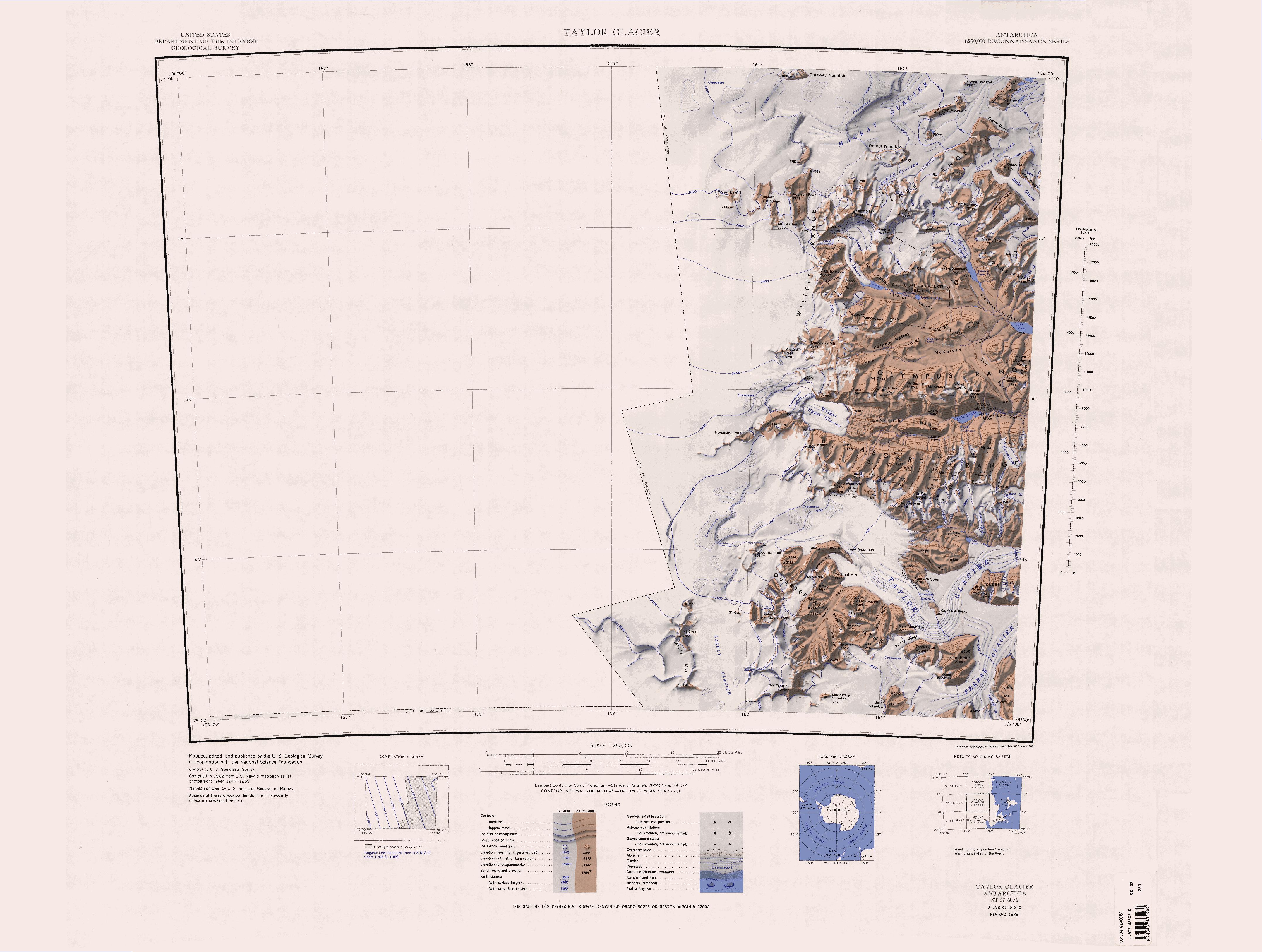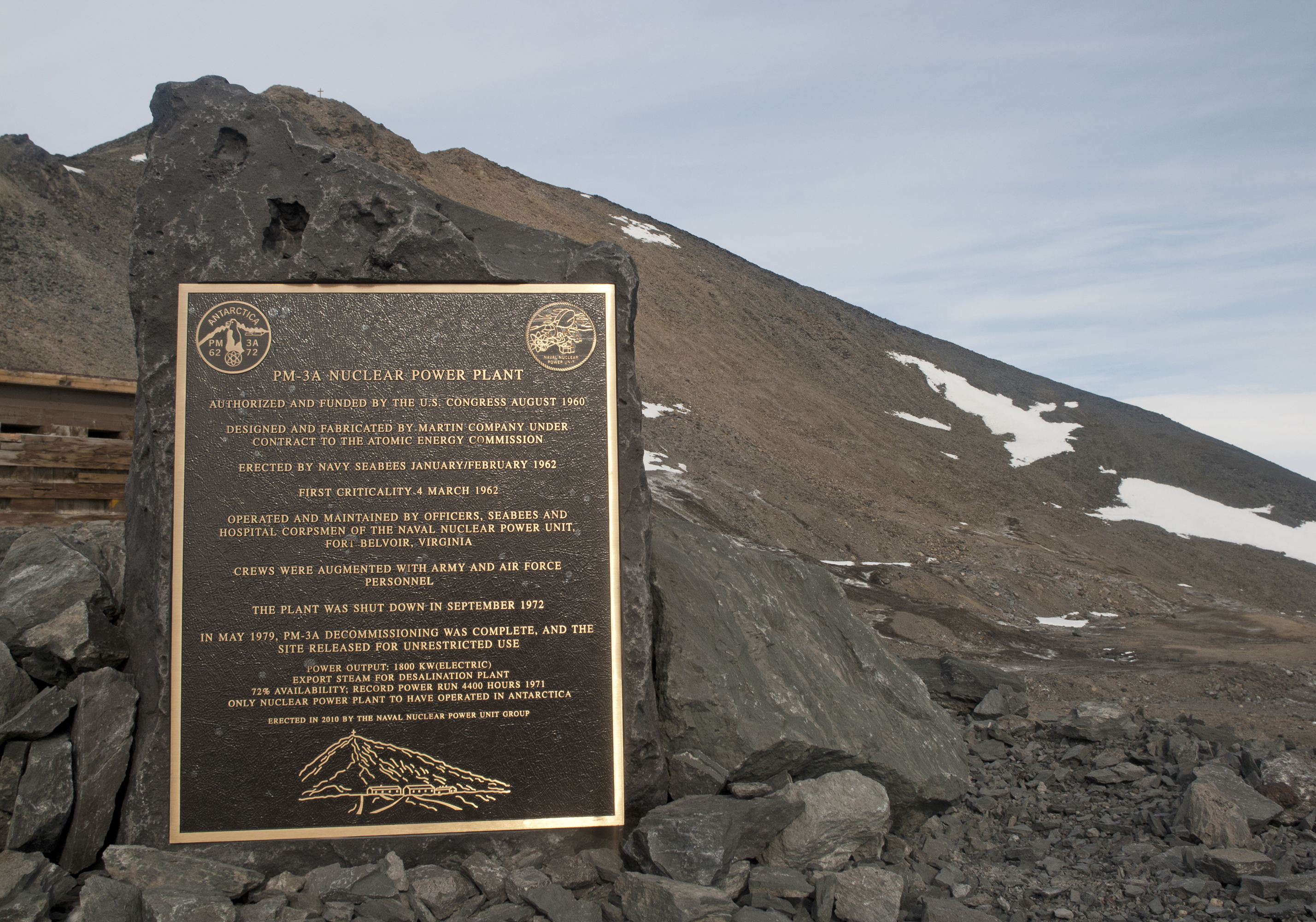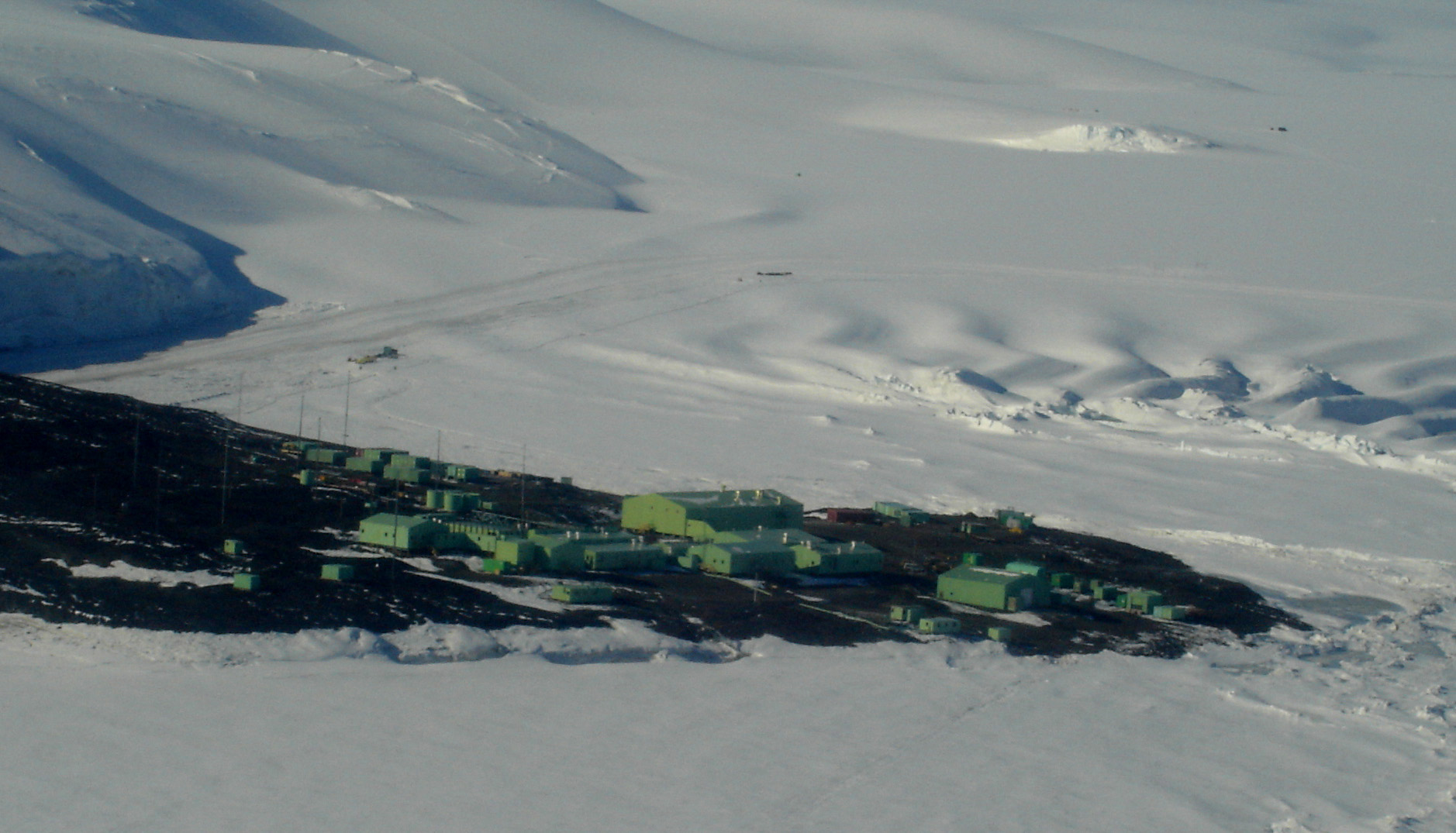|
Nickell Peak
Nickell Peak () is an ice free peak in Antarctica, standing at the west side of Victoria Upper Lake, 1 nautical mile (1.9 km) southeast of Sponsors Peak, in Victoria Land. Named by Advisory Committee on Antarctic Names (US-ACAN) for Gregory W. Nickell, manager of the Eklund Biological Center, and of the Thiel Earth Sciences Laboratory at McMurdo Station McMurdo Station is a United States Antarctic research station on the south tip of Ross Island, which is in the New Zealand-claimed Ross Dependency on the shore of McMurdo Sound in Antarctica. It is operated by the United States through the Unit .... He died accidentally on May 15, 1974, when a truck he was driving left the road between McMurdo Station and Scott Base. Mountains of Victoria Land McMurdo Dry Valleys {{McMurdoDryValleys-geo-stub ... [...More Info...] [...Related Items...] OR: [Wikipedia] [Google] [Baidu] |
Summit (topography)
A summit is a point on a surface that is higher in elevation than all points immediately adjacent to it. The topographic terms acme, apex, peak (mountain peak), and zenith are synonymous. The term (mountain top) is generally used only for a mountain peak that is located at some distance from the nearest point of higher elevation. For example, a big, massive rock next to the main summit of a mountain is not considered a summit. Summits near a higher peak, with some prominence or isolation, but not reaching a certain cutoff value for the quantities, are often considered ''subsummits'' (or ''subpeaks'') of the higher peak, and are considered part of the same mountain. A pyramidal peak is an exaggerated form produced by ice erosion of a mountain top. Summit may also refer to the highest point along a line, trail, or route. The highest summit in the world is Mount Everest with a height of above sea level. The first official ascent was made by Tenzing Norgay and Sir Edmund Hill ... [...More Info...] [...Related Items...] OR: [Wikipedia] [Google] [Baidu] |
Antarctica
Antarctica () is Earth's southernmost and least-populated continent. Situated almost entirely south of the Antarctic Circle and surrounded by the Southern Ocean, it contains the geographic South Pole. Antarctica is the fifth-largest continent, being about 40% larger than Europe, and has an area of . Most of Antarctica is covered by the Antarctic ice sheet, with an average thickness of . Antarctica is, on average, the coldest, driest, and windiest of the continents, and it has the highest average elevation. It is mainly a polar desert, with annual precipitation of over along the coast and far less inland. About 70% of the world's freshwater reserves are frozen in Antarctica, which, if melted, would raise global sea levels by almost . Antarctica holds the record for the lowest measured temperature on Earth, . The coastal regions can reach temperatures over in summer. Native species of animals include mites, nematodes, penguins, seals and tardigrades. Where ve ... [...More Info...] [...Related Items...] OR: [Wikipedia] [Google] [Baidu] |
Victoria Upper Lake
Victoria Valley is one of the larger McMurdo Dry Valleys in Antarctica. Lake Vida is the largest lake of the valley. The Victoria River drains the Victoria Upper Glacier, with Upper Victoria Lake just below it and northwest of Lake Vida, into Vida Lake on its western side. Lake Thomas Lake Thomas is a meltwater lake that is circumscribed on the northwest and northeast sides by Robertson Ridge and Clark Glacier (Antarctica), Clark Glacier, in Victoria Land, Antarctica. It was named by the Advisory Committee on Antarctic Names for ... is east of Lake Vida. See also * Dry Valleys Geology Valleys of Victoria Land McMurdo Dry Valleys {{McMurdoDryValleys-geo-stub ... [...More Info...] [...Related Items...] OR: [Wikipedia] [Google] [Baidu] |
Sponsors Peak
The Cruzen Range () is a mountain range that rises to in Vashka Crag and extends west to east for between Salyer Ledge and Nickell Peak in the McMurdo Dry Valleys, Victoria Land, Antarctica. The range is bounded to north, east, south and west by the Clare Range, Victoria Valley, Barwick Valley, and the Webb Glacier. Name The Cruzen Range was named by the United States Advisory Committee on Antarctic Names (US-ACAP) in 2005 after Rear Admiral Richard H. Cruzen, commander of Task Force 68 during the U.S. Navy Antarctic Developments Project, 1946-47 (Operation Highjump). Location The Cruzen Range was formerly the southern part of the Clare Range, to the north. It is separated from the Clare Range by Webb Cirque which holds the névé at the head of the Webb Glacier to the northwest, and Victoria Upper Névé that feeds Victoria Upper Glacier to the northeast. The two are separated by a ridge leading south from Parker Mesa to The Fortress. To the south the range is bounded ... [...More Info...] [...Related Items...] OR: [Wikipedia] [Google] [Baidu] |
Victoria Land
Victoria Land is a region in eastern Antarctica which fronts the western side of the Ross Sea and the Ross Ice Shelf, extending southward from about 70°30'S to 78°00'S, and westward from the Ross Sea to the edge of the Antarctic Plateau. It was discovered by Captain James Clark Ross in January 1841 and named after Queen Victoria. The rocky promontory of Minna Bluff is often regarded as the southernmost point of Victoria Land, and separates the Scott Coast to the north from the Hillary Coast of the Ross Dependency to the south. The region includes ranges of the Transantarctic Mountains and the McMurdo Dry Valleys (the highest point being Mount Abbott in the Northern Foothills), and the flatlands known as the Labyrinth. The Mount Melbourne is an active volcano in Victoria Land. Early explorers of Victoria Land include James Clark Ross and Douglas Mawson. In 1979, scientists discovered a group of 309 meteorites A meteorite is a solid piece of debris from an ... [...More Info...] [...Related Items...] OR: [Wikipedia] [Google] [Baidu] |
Advisory Committee On Antarctic Names
The Advisory Committee on Antarctic Names (ACAN or US-ACAN) is an advisory committee of the United States Board on Geographic Names responsible for recommending commemorative names for features in Antarctica. History The committee was established in 1943 as the Special Committee on Antarctic Names (SCAN). It became the Advisory Committee on Antarctic Names in 1947. Fred G. Alberts was Secretary of the Committee from 1949 to 1980. By 1959, a structured nomenclature was reached, allowing for further exploration, structured mapping of the region and a unique naming system. A 1990 ACAN gazeeter of Antarctica listed 16,000 names. Description The United States does not recognise territorial boundaries within Antarctica, so ACAN assigns names to features anywhere within the continent, in consultation with other national nomenclature bodies where appropriate, as defined by the Antarctic Treaty System. The research and staff support for the ACAN is provided by the United States Geolog ... [...More Info...] [...Related Items...] OR: [Wikipedia] [Google] [Baidu] |
Gregory W
Gregory may refer to: People and fictional characters * Gregory (given name), including a list of people and fictional characters with the given name * Gregory (surname), a surname Places Australia *Gregory, Queensland, a town in the Shire of Burke **Electoral district of Gregory, Queensland, Australia *Gregory, Western Australia. United States *Gregory, South Dakota * Gregory, Tennessee *Gregory, Texas Outer space *Gregory (lunar crater) * Gregory (crater on Venus) Other uses * "Gregory" (''The Americans''), the third episode of the first season of the television series ''The Americans'' See also * Greg (other) * Greggory * Gregoire (other) * Gregor (other) * Gregores (other) * Gregorian (other) * Gregory County (other) * Gregory Highway, Queensland * Gregory National Park, Northern Territory * Gregory River in the Shire of Burke, Queensland * Justice Gregory (other) Justice Gregory may refer to: * Georg ... [...More Info...] [...Related Items...] OR: [Wikipedia] [Google] [Baidu] |
Eklund Biological Center
Eklund is a Swedish surname. Geographical distribution As of 2014, 57.3% of all known bearers of the surname ''Eklund'' were residents of Sweden (frequency 1:641), 22.2% of the United States (1:60,735), 13.1% of Finland (1:1,564), 1.9% of Norway (1:10,024), 1.7% of Canada (1:79,135) and 1.0% of Denmark (1:20,451). In Sweden, the frequency of the surname was higher than national average (1:641) in the following counties: * 1. Uppsala County (1:304) * 2. Västmanland County (1:354) * 3. Västerbotten County (1:369) * 4. Gävleborg County (1:415) * 5. Södermanland County (1:457) * 6. Örebro County (1:482) * 7. Gotland County (1:483) * 8. Dalarna County (1:485) * 9. Östergötland County (1:549) * 10. Norrbotten County (1:578) * 11. Stockholm County (1:609) In Finland, the frequency of the surname was higher than national average (1:1,564) in the following regions: * 1. Åland (1:210) * 2. Ostrobothnia (1:343) * 3. Uusimaa (1:972) * 4. Southwest Finland (1:1,030) People * And ... [...More Info...] [...Related Items...] OR: [Wikipedia] [Google] [Baidu] |
Thiel Earth Sciences Laboratory
Thiele/Small parameters (commonly abbreviated T/S parameters, or TSP) are a set of electromechanical parameters that define the specified low frequency performance of a loudspeaker driver. These parameters are published in specification sheets by driver manufacturers so that designers have a guide in selecting off-the-shelf drivers for loudspeaker designs. Using these parameters, a loudspeaker designer may simulate the position, velocity and acceleration of the diaphragm, the input impedance and the sound output of a system comprising a loudspeaker and enclosure. Many of the parameters are strictly defined only at the resonant frequency, but the approach is generally applicable in the frequency range where the diaphragm motion is largely pistonic, i.e. when the entire cone moves in and out as a unit without cone breakup. Rather than purchase off-the-shelf components, loudspeaker design engineers often define desired performance and work backwards to a set of parameters and manufact ... [...More Info...] [...Related Items...] OR: [Wikipedia] [Google] [Baidu] |
McMurdo Station
McMurdo Station is a United States Antarctic research station on the south tip of Ross Island, which is in the New Zealand-claimed Ross Dependency on the shore of McMurdo Sound in Antarctica. It is operated by the United States through the United States Antarctic Program (USAP), a branch of the National Science Foundation. The station is the largest community in Antarctica, capable of supporting up to 1,258 residents, and serves as one of three year-round United States Antarctic science facilities. All personnel and cargo going to or coming from Amundsen–Scott South Pole Station first pass through McMurdo. By road, McMurdo is 3 kilometres (1.9 mi) from New Zealand's smaller Scott Base. History The station takes its name from its geographic location on McMurdo Sound, named after Lieutenant Archibald McMurdo of . The ''Terror'', commanded by Irish explorer Francis Crozier, along with expedition flagship ''Erebus'' under command of James Clark Ross, first charted the a ... [...More Info...] [...Related Items...] OR: [Wikipedia] [Google] [Baidu] |
Scott Base
Scott Base is a New Zealand Antarctic research station at Pram Point on Ross Island near Mount Erebus in New Zealand's Ross Dependency territorial claim. It was named in honour of Captain Robert Falcon Scott, RN, leader of two British expeditions to the Ross Sea area of Antarctica. The base was set up as support to field research and the centre for research into earth sciences, and now conducts research in many fields, operated by Antarctica New Zealand. The base is from the larger U.S. McMurdo Station via Pegasus Road. History Scott Base was originally constructed in support of the UK inspired and privately managed Commonwealth Trans-Antarctic Expedition (TAE). The New Zealand government provided support for the TAE and also for the International Geophysical Year (IGY) project of 1957, five of whose members were attached to the Expedition. In February 1956, 10 months before the TAE and IGY parties were due to head to the Antarctic, Frank Ponder, an architect at the Mi ... [...More Info...] [...Related Items...] OR: [Wikipedia] [Google] [Baidu] |
Mountains Of Victoria Land
A mountain is an elevated portion of the Earth's crust, generally with steep sides that show significant exposed bedrock. Although definitions vary, a mountain may differ from a plateau in having a limited summit area, and is usually higher than a hill, typically rising at least 300 metres (1,000 feet) above the surrounding land. A few mountains are isolated summits, but most occur in mountain ranges. Mountains are formed through tectonic forces, erosion, or volcanism, which act on time scales of up to tens of millions of years. Once mountain building ceases, mountains are slowly leveled through the action of weathering, through slumping and other forms of mass wasting, as well as through erosion by rivers and glaciers. High elevations on mountains produce colder climates than at sea level at similar latitude. These colder climates strongly affect the ecosystems of mountains: different elevations have different plants and animals. Because of the less hospitable terrain and ... [...More Info...] [...Related Items...] OR: [Wikipedia] [Google] [Baidu] |







